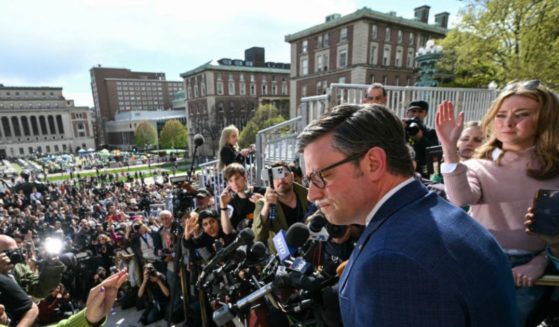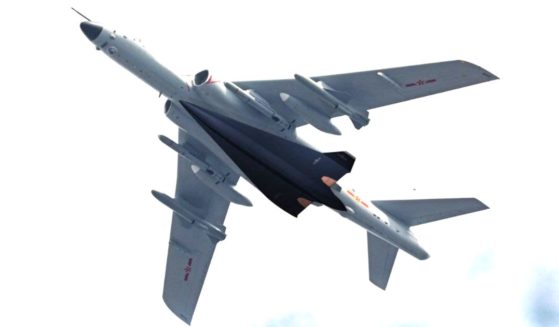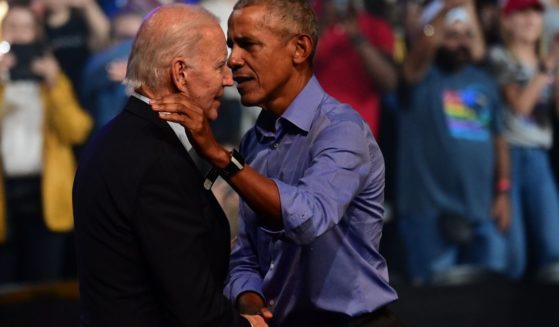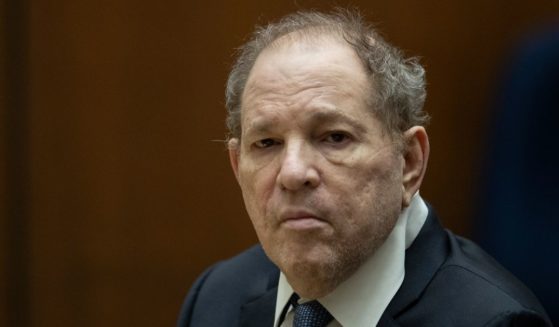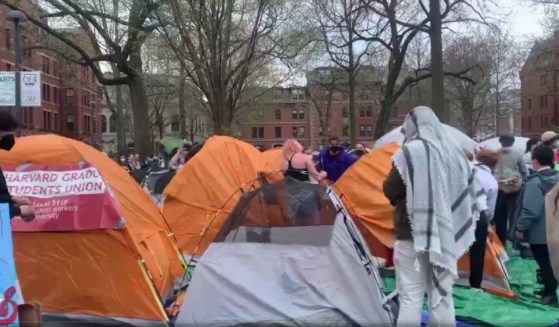Taliban Now Have More Air Power Than Some NATO Nations, Here's How Many Aircraft They Could Have
Thanks to the collapse of the Afghan military, the Taliban now have more aircraft than 10 NATO nations.
What’s worse, that number isn’t higher only because the United States rendered dozens of Afghan military aircraft at Kabul’s Hamid Karzai International Airport useless before American troops evacuated.
Good job, everyone.
According to a report in the Daily Mail on Wednesday, the Taliban seized at least 48 aircraft when they took full control of the country in August, including several Black Hawk helicopters — one of which was flown during the Taliban victory parade in Kandahar on Wednesday.
“Taliban helicopters also flew over the victory parade in Kandahar today.”
See, we told you they weren’t hanging people. Checkmate cons. @GlennKesslerWP https://t.co/QgjnzkGTo7
— Stephen L. Miller (@redsteeze) September 1, 2021
Given that these aircraft require highly trained pilots to fly them, this also means the Taliban have likely gotten ahold of a rogue pilot or two from the former Afghan military.
As the Daily Mail noted, 10 major airfields were captured by the Taliban on their way to seizing power in Afghanistan, including the bases at Bagram and Mazar-i-Sharif.
With the 48 aircraft they have, the Taliban now have a larger air force than 10 of our NATO allies — Slovenia (37), North Macedonia (20), Albania (19), Bosnia (19), Lithuania (10), Montenegro (10), Estonia (six), Latvia (four) and Iceland and Luxembourg (zero).
These aircraft require maintenance, parts and trained people to fly them and keep them flying. However, the waste involved is almost as disturbing as the fact the Taliban now have the aircraft in their possession.
As of June 30, Afghanistan’s air force was flying 167 aircraft — 108 helicopters and 59 planes.
Uzbekistan said that 24 helicopters and 22 planes had been flown there by Afghan pilots before Kabul fell.
Furthermore, 73 of those aircraft were “demilitarized” by U.S. forces before our departure, according to U.S. Central Command chief Gen. Frank McKenzie.
“Those aircraft will never fly again when we left,” McKenzie said during a news conference Monday, according to a Pentagon transcript.
“They’ll never be able to be operated by anyone. Most of them were non-mission capable to begin with, but certainly they’ll never be able to be flown again,” he said.
Even if they had been “demilitarized,” the Taliban was still able to use shots of the abandoned aircraft for propaganda purposes.
Taliban pose with a C-130 Hercules Joe Biden gave them. pic.twitter.com/97KvDIuC8h
— Steve Milloy (@JunkScience) August 31, 2021
Taliban fighters—wearing US uniforms and carrying US weapons—inspecting (disabled) US aircraft left behind in Kabul’s airport.
pic: @yamphoto pic.twitter.com/kT7YBZ0gW9
— ian bremmer (@ianbremmer) August 31, 2021
Taliban inside what it looks like the C-130J transport aircraft. pic.twitter.com/roaAdY3O3X
— Hunt | شکار (@El_Hunto) August 31, 2021
It’s also unclear whether the “demilitarized” aircraft could be repurposed for spare parts — or even which aircraft had been demilitarized in the first place.
The closest estimate seems to come from the blog Oryx, run by Stijn Mitzer and Joost Oliemans. As auto-and-aviation-centric website The Drive notes, the two “open-source researchers … have been tracking how many former Afghan military aircraft have fallen into Taliban hands for weeks now.”
Their assessment as of Aug. 16, just after the fall of Kabul, put the number of captured aircraft slightly higher than the Daily Mail did — 51 in total.
When it comes to fixed-wing planes, the Taliban had at least one A-29B light attack aircraft, one Cessna 208 utility aircraft, three L-39 jet trainers (inoperational for several years) and eight An-26/An-32 transport aircraft (also inoperational for several years), according to Oryx.
As for helicopters, they had four UH-60 Black Hawks, 10 MD-530F attack helicopters, 11 Mi-8/Mi-17 transport helicopters and 13 Mi-24/Mi-35 attack helicopters (most inoperational for several years.)
They also had taken control of seven Boeing Insitu ScanEagle drones.
Mitzer and Oliemans said their “list only includes captured Afghan aircraft of which photographic or videographic evidence is available. Therefore, the amount of aircraft captured is undoubtedly higher than what is listed here.”
It’s also worth noting that, of the aircraft the U.S. demilitarized at Kabul, according to Oryx, many were of the same types as the aircraft they’d already captured — including 12 Black Hawks, 12 A-29Bs and nine MD-530s. Can they be used for spares if necessary? Again — we don’t know. Even if they can’t be, it’s a tremendous waste.
There are reasons to hope the Taliban’s air force won’t be a long-term threat to anyone. As the Daily Mail noted, “these aircraft — many of them dating back to the 1980s — will need expert mechanical care and new parts to keep them airborne.”
“And even then, the Taliban will need to provide funds to arm the aircraft, with the cost of bullets aside, the price of precision-guided missiles becomes exorbitant — particularly for a ragtag government without the means to feed its starving populace,” it said.
However, part of the $83 billion we spent arming and training the Afghan military went toward providing and maintaining these aircraft — aircraft meant to defeat the insurgents who now make up that “ragtag government” and have those planes and helicopters.
Our time in Afghanistan needed to end. It didn’t need to end in waste and humiliation — and with this kind of gift to the Taliban on top of it.
Our NATO allies should be so lucky.
Truth and Accuracy
We are committed to truth and accuracy in all of our journalism. Read our editorial standards.

